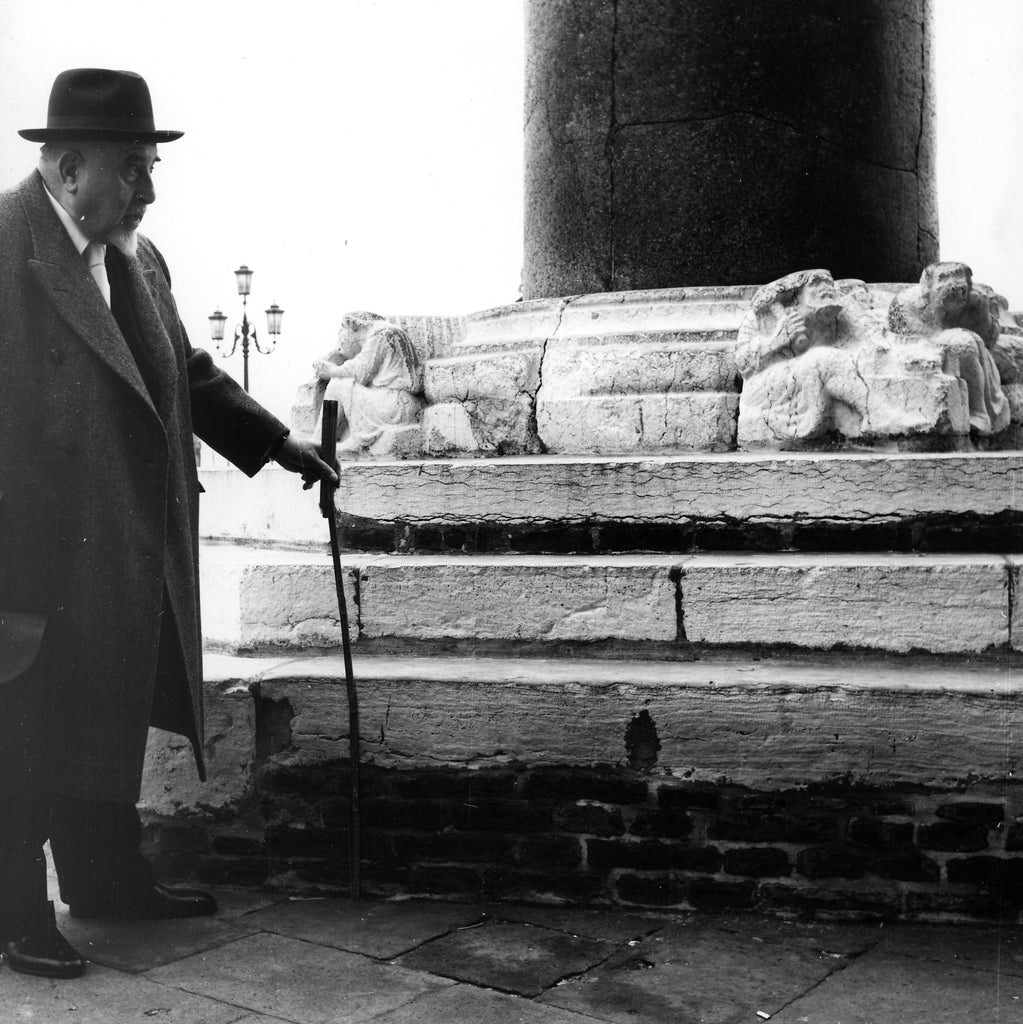
The engineer who updated Venice
Whether you visit the lagoon city for pleasure or for work, whether you head to the Biennale or the Lido: You will encounter Eugenio Miozzi's work everywhere. His rationalist parking garages and innovative bridges linked Venice with the mainland while also preserving the historic structure. Read our portrait of a man who combined centuries-old traditions with a spirit of innovation.
Text: Kyung Hun Oh
Photo: Miozzi measuring the base of the Column of San Teodoro, one of a pair of structures located in St Mark’s Square, around 1950. © IUAV, Archivio Progetti, Fondo Eugenio Miozzi⠀
Eugenio Miozzi, chief architect of Venice from 1931 to 1954, played a key role in shaping the city as it is today. Yet he remains a largely unknown figure. This obscurity can perhaps be traced back to his links to Mussolini’s fascist government. Nonetheless, locals and tourists come in contact with his works on a daily basis. Now a monograph on him has been published by DOM publishers – the book is available in both English and Italian.
Miozzi’s central idea for Venice was to ensure its survival as a ‘normal’ city, which, in his view, would only be possible with the introduction of cars. To this end, he realised a major car park in Piazzale de Roma as well as a new Municpal Garage, allowing visitors to easily access the city from the mainland. He also drew up an ambitious plan to build a large new motorway under the lagoon, running clockwise from Piazzale de Roma to the south of Venice. The project was never realised, though it was worked out in detail. Ponte degli Scalzi is perhaps his most emblematic project. The bridge was based on a highly creative solution from a technical perspective, made entirely of stone, with no iron or concrete reinforcements. Miozzi developed a new calculation method to predict the movements of the bridge’s stone pieces, and thus pared down the structure to the essentials. The outcome represents a seamless combination of modern and traditional building techniques. ‘There is no excess, and no lack, with a perfect balance between function, form, construction, and material,’ said Clemens Kusch, editor of Eugenio Miozzi: Modern Venice Between Innovation and Tradition. So lean was the structure that people were afraid of passing beneath it, for fear that it would collapse.
Miozzi was respectful of the city’s architectural heritage, always placing his modernist projects on the peripheries. In the centre, he endeavoured to find a language that was adapted to the historic urban context. This partly also explains why there have been no attempts to demolish Miozzi’s works in Venice: ‘It doesn’t occur to people that his works aren’t part of the historic city,’ says Kusch. Moreover, each of his works stemmed from a real necessity that still exists today: ‘Their survival is linked to the necessity of his interventions.’
Miozzi’s works also sparked a new debate on the future of Venice: between conservatives who wished to preserve the city as it was, and those who saw the need for modernisation. Ultimately, it seems the former prevailed. The spirit of innovation ebbed away after his death. As Kusch says: ‘Very few important modern buildings were built in the city after him.’












 Strengthening climate resilience in Central Vietnam trough nature-based solutions: Vertical green elements will create a shady and cool public space for school children and residents on hot days. © GCLH
Strengthening climate resilience in Central Vietnam trough nature-based solutions: Vertical green elements will create a shady and cool public space for school children and residents on hot days. © GCLH
